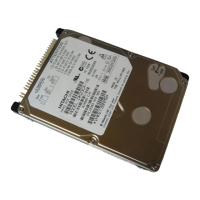SI pair
status
GAD pair operations
Create
pairs
Suspend pairs Delete pairs Resync pairs
P-VOL
selected
S-VOL
selected
P-VOL
selected
1
S-VOL
selected
2
Forced
deletion
P-VOL
selected
S-VOL
selected
COPY(SP)
No
3
Yes Yes
No
4
Yes Yes Yes Yes
PSUS(SP)
No
3
Yes Yes
No
4
Yes Yes Yes Yes
PSUS
No
3
Yes Yes
No
4
Yes Yes Yes Yes
COPY(RS)
No
3
Yes Yes
No
4
Yes Yes Yes Yes
COPY(RS-
R)
No
3, 5
impossible impossible
No
4
Yes Yes
No
5, 6
No
6
PSUE
No
3
Yes Yes
No
4
Yes Yes Yes Yes
Notes:
1. You can delete a GAD pair by specifying the P-VOL, only when the I/O mode is Local and the GAD
pair status of the P-VOL is PSUS or PSUE.
2. You can delete a GAD pair by specifying the S-VOL, only when the I/O mode is Local and the GAD
pair status of the S-VOL is SSWS.
3. The reservation attribute is set and the virtual LDEV ID is deleted for a volume to be the GAD S-VOL,
making it unusable as an SI volume.
4. Cannot be used because, when you delete a GAD pair specifying the S-VOL, the P-VOL's virtual LDEV
ID is also deleted, which makes it unusable as the SI P-VOL.
5. Cannot be used because the volume at the GAD copy destination is the same as the volume at the
ShadowImage copy destination.
6. To continue ShadowImage restore copy, GAD pairs must be suspended.
Related topics
•
ShadowImage on page 2-6
Thin Image
You can use a GAD P-VOL or S-VOL as a Thin Image (HTI) P-VOL. You can
create up to 1,024 Thin Image pairs using a GAD P-VOL, and up to 1,024
Thin Image pairs using a GAD S-VOL.
2-12
System requirements
Hitachi Virtual Storage Platform G1000 Global-Active Device User Guide

